
Open-Source Internship opportunity by OpenGenus for programmers. Apply now.
The incredible journey of ISRO and its struggles with failures and lack of resources, from cycles and bullock carts to Chadrayaan-3 is not less fascinating than any fairy tales. With maintaining this indomitable enthusiasm ISRO launched Chandrayaan-3 on 14th July 2023. According to ISRO, the Chandrayaan-3 mission has three major objectives: demonstrate safe and soft landing on the surface of the Moon, conduct rover operations on the Moon, and conduct in-situ experiments on the Lunar surface.
Let us take an overview about the whole mission we are going to discuss. Chandrayaan-3 includes a Propulsion Module, a Lander and a rover with required experimental and communicational setups.
The processes and technologies will be explained in 3 parts in this article at OpenGenus.org for easy and better understanding.
- Launching - How Chandrayaan-3 will be established on Earth's orbit?
- Trajectory analysis - How Chandrayaan-3 will reach Moon by changing it's orbits and lands on the lunar surface?
3.How in-situ experiments will be performed after landing on Moon?
Launching
Rockets are launched by creating a thrust force downward using the burning propellant(fuel+oxidizer). According to newton's 3rd law, it also pushed with the same amount of reaction force by the air and goes upward.
Thrust force, F=(ve)×(dm/dt) .
By using F=m(dv/dt) (Newton's 2nd law) and integrating we get

(negleating all other forces like gravity and air drag.)
Now If we want to reach our required velocity of the Launch vehicle to put the payload(Chadrayaan-3) in the orbit, we need sufficient amount of fuel and a large chamber to carry these fuels. Because of these final (dry) mass(mf) of the rocket will increase and ∇v will decrease. Hence we will not get enough velocity gain.
But what if we divide the fuels in some parts and keep it in different compartments and separate those compartments step by step after the kept fuels are completely used. mf can be reduced and we can achieve high velocity gain easily. That's why we perform launching divinding the process in multiple stages.
ISRO will perform the launching by using LVM3-M4.
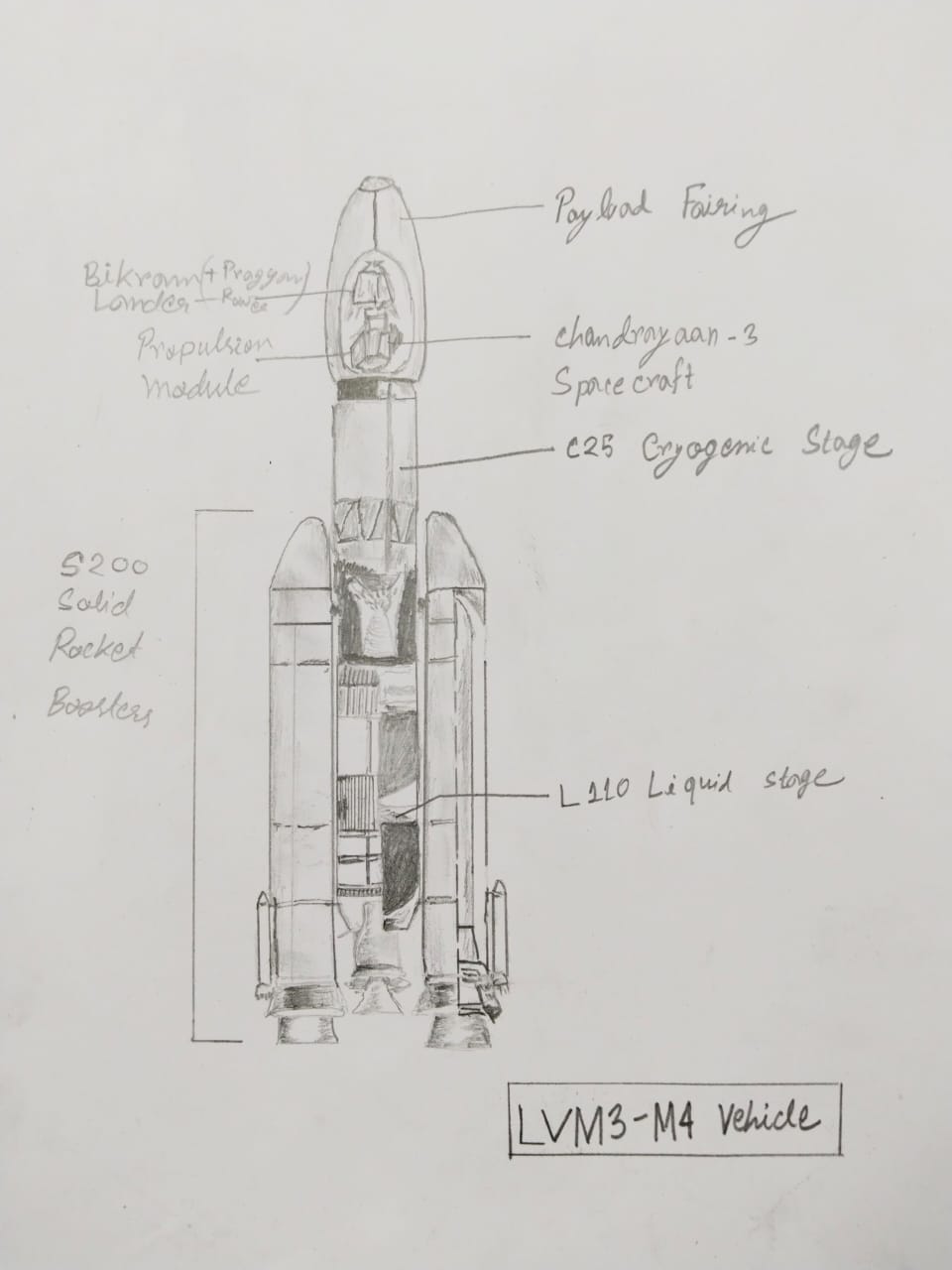
Propulsion Stages :
- Strap-on Motors | 2 x S200(Solid)
- Core Stage____ | L110 (Liquid)
- Upper Stage___ | C25 (Cryo)
- Payload Fairing_| 5 m OPLF
S-200 is solid rocket boosters which fulfil the high thrust requirement in its 1st stage. HTPB propellant was kept inside in a right circular hollow cylindrical shape The Igniter ignites and throws a flame through the axis of the cylinder and it spreads outward and burns propellant. Reaction inside S-200 can't be stopped untill all the propellants are burned.
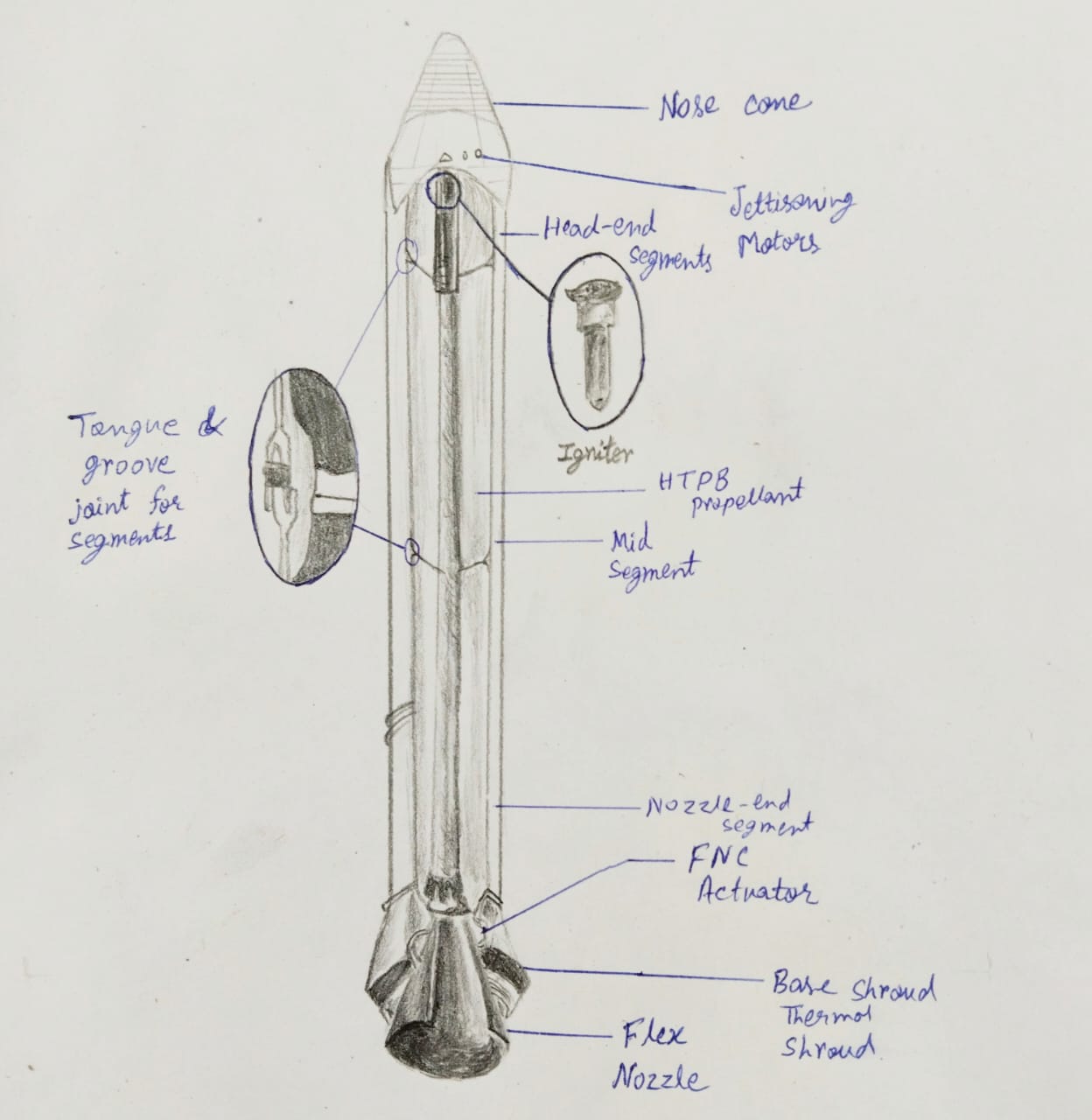
After complete burning S-200 will be separated using Pyrotechnic. Explosive bolts or charges will be used to cut the physical connections. With the thrust of small Pyro rockets they move away from the rocket's trajectory and fall back towards Earth without interfering with the ascending main rocket.
Just before the separations of S-200 two VIK-A-S engines,
L-110 (named in an honour to VIKram A. Sarabhai, Father of the Indian space program) will be ignited and Stage-2 (Core Stage) will begin. Just after that Payload Fairing will be separated. Unsymmetrical Dimethylhydrazine is used in it as fuel and Nitrogen Tetroxide as Oxidizer.After complete burn it will also be separated.
In the same way in Stage-3: Cryogenic Upper Stage, C25 Cryogenic Engine will be activated. Liquid Hydrogen is used as a fuel and liquid Oxygen is used as oxidizer in it.
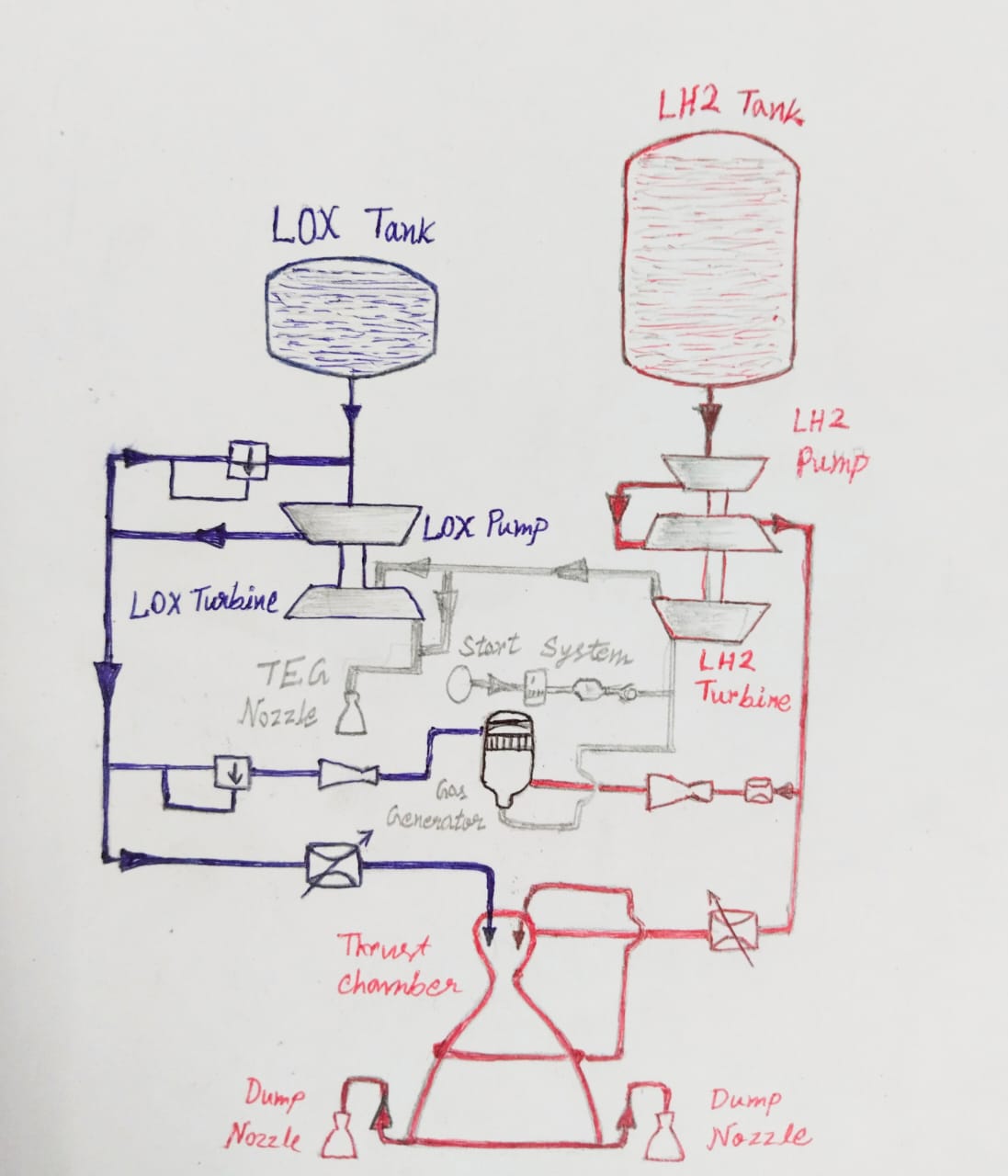
The Gas Generator sucks liquid Hydrogen and liquid Oxygen from LH2 Tank and LOX Tank, respectively by rotating an impeller. After the combustion of these gases Hydrogen rich hot gase will form and flow through the pipe line. It will reach to the LH2 Turbine then to LOX Turbine and rotate these turbines. After that these Hydrogen rich hot gase will be discharged through TEG Nozzle. When these turbines rotates they suck liq. H2 and liq. O2 from fuel tank and oxidizer tank. these flows maintains continuous supply of H2 and O2 to the Gas Generator. Beacause of this mechanism most of the fuel and oxidizer flows towards Thrust Chamber and is rotated around the thrusters to keep it cool. Then it reaches inside the thruster and is burned to generate the Thrust Force. Temperature at which H2 and O2 kept in liquid state is -253 deg C and -183 deg C, respectively. But the temperature of the exhaust gases is nearly 3000 deg C. To maintain this high temperature gradient complex plumbing is applied. After Complete burning of fuel this part will also be separated and the Chandrayaan-3 will be put into its orbit.
There are overlapping between each stage of a launching process. The next stage engine will be ignited, before the saparation previous stage.
Event________________Flight Time(s) _|__Altitude(km)__|_Inertial Velocity(km/s)
2xS200Ignition_______0.00_______________0.024__________0.452
L110 Ignition________108.10_____________44.668_________1.788
2xS200 Separation____127.00_____________62.171_________1.969
PLF Separation_______194.96_____________114.805________2.560
L110 Separation______305.56_____________175.352________4.623
C25 Ignition_________307.96_____________176.573________4.621
C25 Shut-off_________954.42_____________174.695________10.242
Satellite Separation_969.42_____________179.192________10.269
Trajectory analysis
{prerequisite: Ellipse (Math) and Gravitation(physics) till Class 12th Level}
If an object have to move round the Earth in a circular orbit, Earth's gravitational force and the centrifugal force due to the curved motion of the object must cancel each other to maintain the equilibrium. from this condition we get a relation between velocity of the object and its altitude(h).we call it orbital velocity,v0.
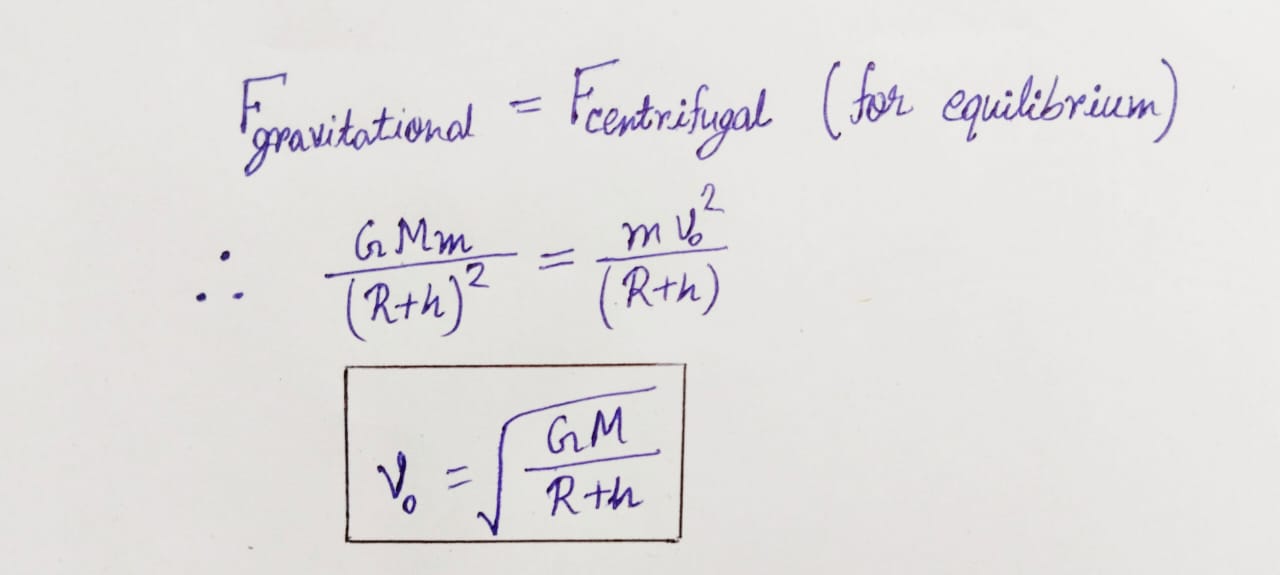
An object requires a minimum velocity to escape the Earth's gravitational field is known as Escape Velocity, ***v(es)***.
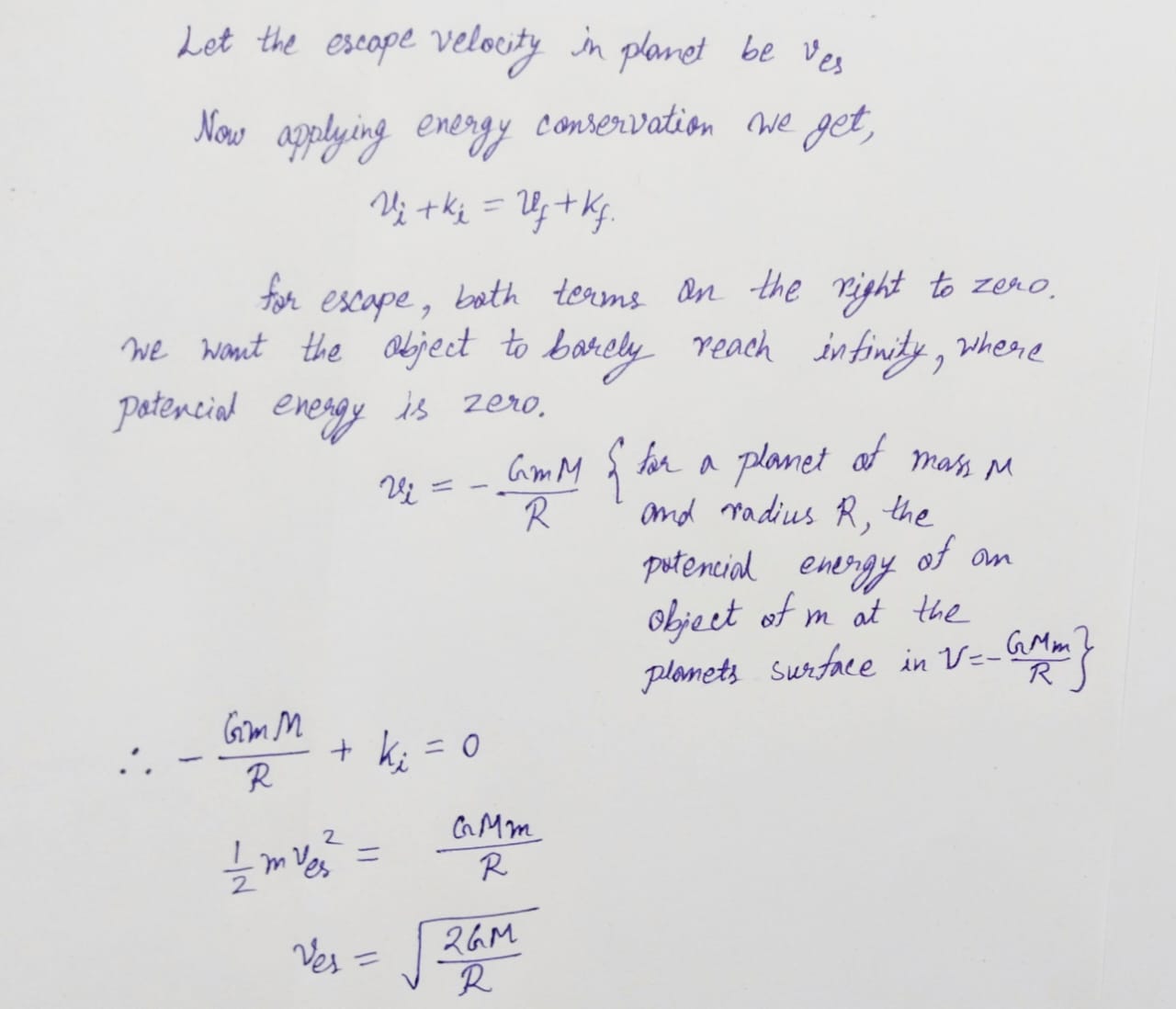
Now if the velocity of Chandrayaan-3 is v and v0<v<v(es) , the orbit will be elliptical with an eccentricity, e lies in (0,1) keeping Earth at it's Focus. When v=v0, e=0(zero). Hence it's a special case of elliptical orbit known as circular(semimajor axis=semi minor axis=radius). Closest point of the elliptical orbit from Earth's center is called perigee and the farthest point is called apogee. From Kepler’s 2nd Law of Planetary Motion, v×r=constant (r=distance between the object and earth).So, at perigee velocity of the object is highest and it decreases gradually as it go towards apogee. After crossing apogee point its velocity increases gradually untill it reaches perigee. For better understanding we can compare with how Velocity, Altitude, Kinetic Energy(KE), Potencial Energy(PE) varies for a stone thrown upward. But always KE+PE=Constant.
Thrusters are fired at the perigee point to take advantages of that highest speed, to minimize the air drag and burning of propellant while changing one orbit to another.

(In this spacecraft is shifting its orbit from a to b, by using different Burns.)
When thrusters are fired backward to increase the velocity of the spacecraft in the same direction, spacecraft is transfered from lower orbit to higher orbit in the same plane. It is called Prograde Burn. When thrusters are fired towards forward direction the velocity get reduced, spacecraft is transfered from higher orbit to lower orbit in the same plane. It is called Retrograde Burn.
After placing the Chandrayaan-3 in the orbit of earth, we will increase the length of semimajor axis, a and eccentricity, e keeping the length of the semiminor axis, b same for the eliptical orbit by using Prograde Burn multiple times and transfer it to the higher orbits.

Now we have to choose an elliptical orbit with high eccentricity whose trajectory crosses a position near the Moon at that perticular time. When we reach near the Moon we will use Retrograde Burn to reduce it's velocity to a value between orbital velocity, v0(Moon) at that distance from Moon and the escape velocity of Moon, ***v(es)(Moon)***. Instead of having many obstacles like Meteoroids, dust, mathematical or practical errors or any accidental event If the Moon catches the Chandrayaan-3, it will again form an elliptical orbit again rounding the Moon. After that we will tranfer it to lower orbits and gain a circular shape of the orbit by satisfying the condition, v=***v0(Moon)***. After that the Propulsion Module and Lander will be separted. we know that v0 depends on h, altitude or height from the surface of the celestial body. if we reduce the velocity of the lander further, it will gradually lowering its altitude and lands on the surface of the Moon at the location 69.367621 S, 32.348126 E (69.367621° apart from the equator towards south and 32.348126° apart from the prime meridian towards east).The Propulsion Module will continue circling the Moon and work as relay communication.
If Thrusters are fired with calculated thrust forces at the Perpendicular direction to the direction of motion of the spacecraft, an inclination change with a certain angle can be created in the place of the orbit keeping the centre of rotation same.
It is called Normal or Anti Normal Burn according to the direction of inclination change. It is used to get the requared trajectory and to correct errors in the position of a spacecraft.
In-Situ experiments, using Vikram Lander and Pragyan Rover
There are 6 experimental setups. 1 of these are in Propulsion Module, 3 of these are in Lander and 2 are in Rover. After the deployment of the ramp on the Vikram lander, Pragyan Rover will come out from the Rover compartment of the Lander.
Lander Payloads
RAMBHA-LP(Langmuir Probe)
It will calculate the near surface plasma (ions and electrons) density and its changes with time.
ChaSTE(Chandra’s Surface Thermophysical Experiment)
It will carry out the measurements of thermal properties of lunar surface.
ILSA(Instrument for Lunar Seismic Activity)
It will measure seismicity around the landing site and depicting the structure of the lunar crust and mantle.
Rover Payloads
APXS(Alpha Particle X-Ray Spectrometer)
It will derive the chemical composition and infer mineralogical composition for understanding of lunar surface.
LIBS(Laser Induced Breakdown Spectroscope)
It will detect the elemental composition (Mg, Al, Si, K, Ca,Ti, Fe) of lunar soil and rocks around the lunar landing site.
We can get to know about the possibility of life on Moon and habitability on Moon for human beings from these studies.
Propulsion Module Payload
SHAPE
(Spectro-polarimetry of HAbitable Planet Earth)
It is an experimental payload to study the spectro-polarimetric signatures of the habitable planet Earth in the near-infrared (NIR) wavelength range (1-1.7 μm) with a purpuse of capturing light reflected by Earth as a habitable planet, finding the pattern in that data and characterizing it as a signature of habitable Planets or living planets. It will help ISRO in space exploration in search of Life in future.
